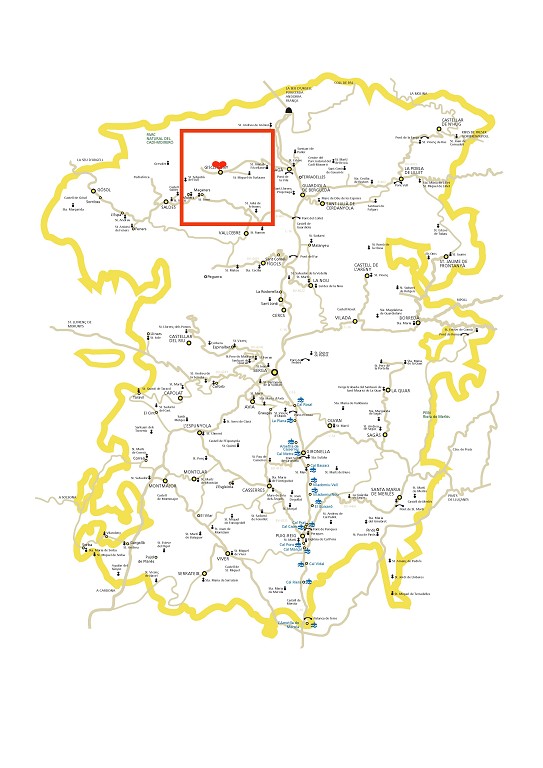
Mirador de la Gargallosa, Gisclareny
La Gargallosa viewpoint
 The three hundred houses
The three hundred houses
Although it may be difficult to believe today, there were 300 inhabited houses in Gisclareny. There are also records referring to four castles, six bridges and about fifteen Romanesque churches, six mills, two saw mills, four hostels, a forge, a roof tile factory... its inhabitants could find eternal rest in one of its six cemeteries. The two main historical paths that connected Berguedà to Cerdanya start from here: the path of the Empedrats, through Coll de Pendís and the Camí Ral or Royal Path of Coll de Jou. Unfortunately, the 20th century was to see such a decline in population that only four or five houses remained inhabited. Gisclareny is comprised of neighbourhoods and farmhouses, a village without "village". The extremely mountainous and craggy geography of Alt Berguedà did not favour the formation of large towns. The weather is harsh and fertile plains are scarce. This is more a country for grazing animals than for working with a hoe.
 That's impossible!
That's impossible!
Oh my God! That's impossible, everybody said, but Pedraforca attracted those young people like a magnet. The cold and brutal wall of the northern face obsessed them. The group leader was Lluís Estasen, an extraordinary climber who would have a strong influence on the birth of mountaineering and climbing in Catalonia. Finally, on 30th June 1928, Estasen and his roped party climbed the northern face of the Pollegó Superior for the first time, opening the route that was given his name. What had seemed impossible, was now a reality. However, the challenges had only just begun and some would be comparable to the great feats of the Alps. Who would dare to climb this extraordinary wall again in mid-winter?
Technical sheet
Town: Gisclareny
To organise
Stop points: Gisclareny
OFICINA DE TURISME DEL BERGUEDÀ
Carretera C16 Km 96
08600-Berga. Phone (+34) 654 125 696
Monday to Friday: 9 to 14h.
Saturday: 10 to 14 & 16 to 18h.
Sunday and holidays: 10 to 14h.
E-mail: turisme@elbergueda.cat
[Premsa]
Other

 English
English Follow us
Follow us






![[Tancar]](/plantilles/bergueda/img/tancar.png)














